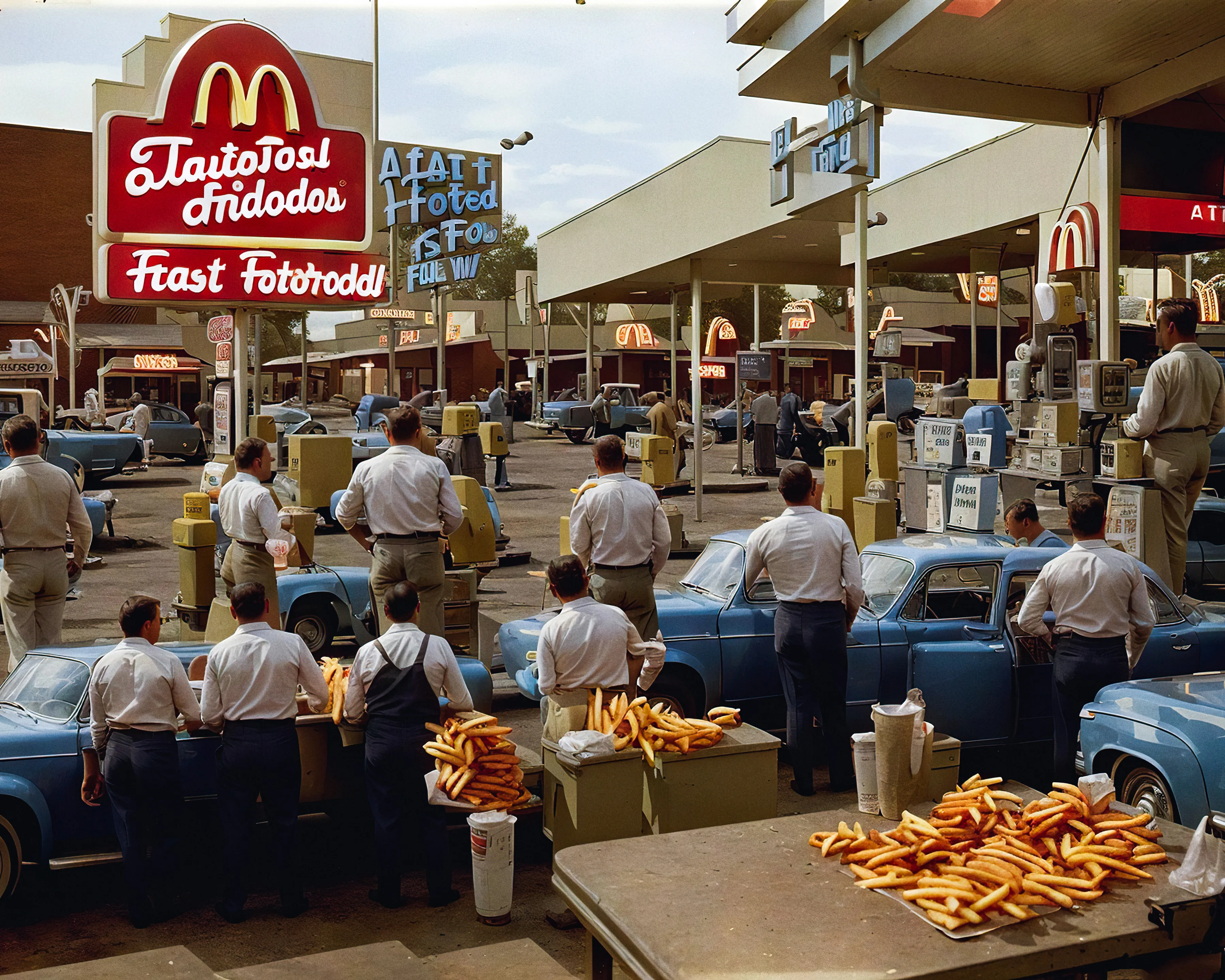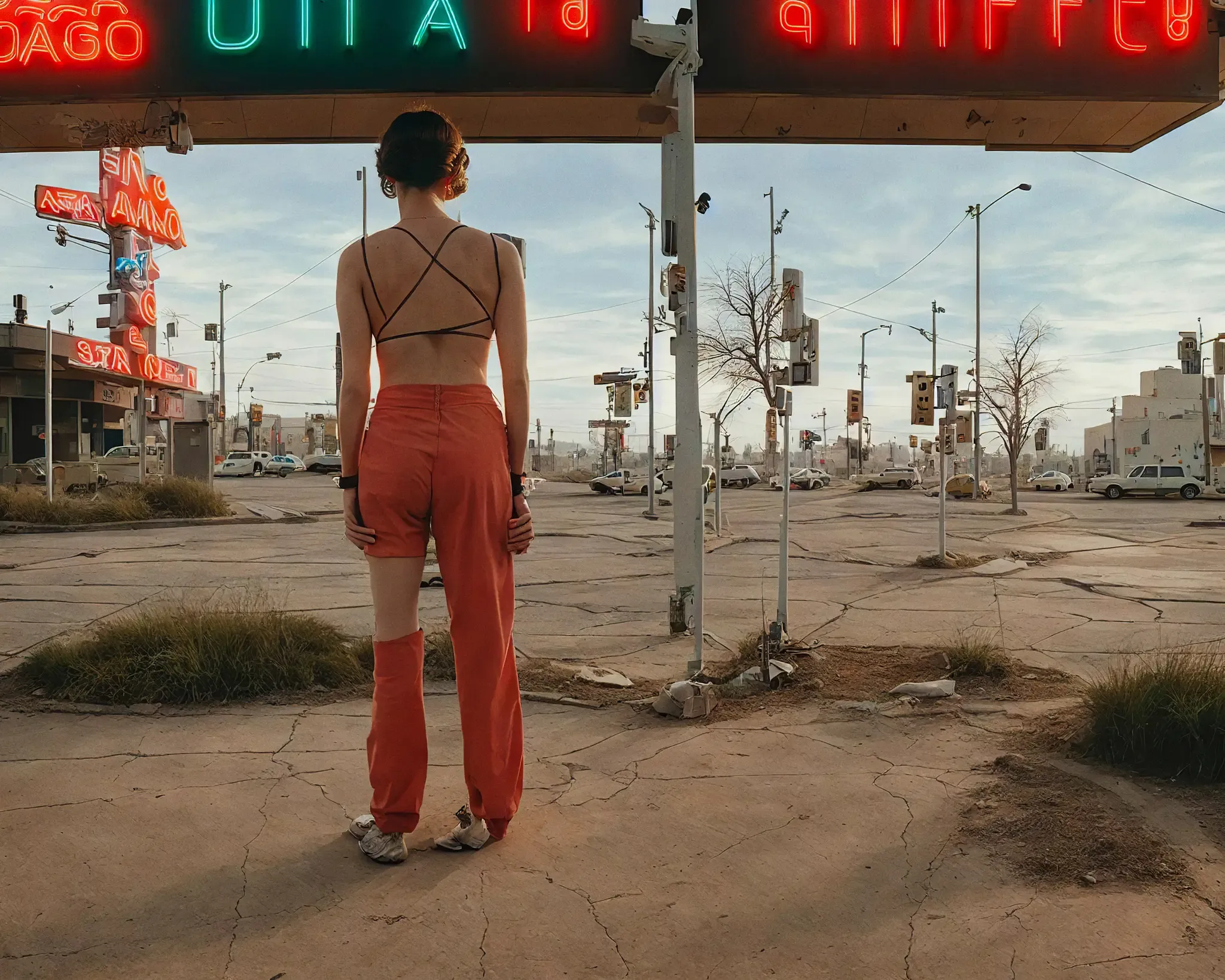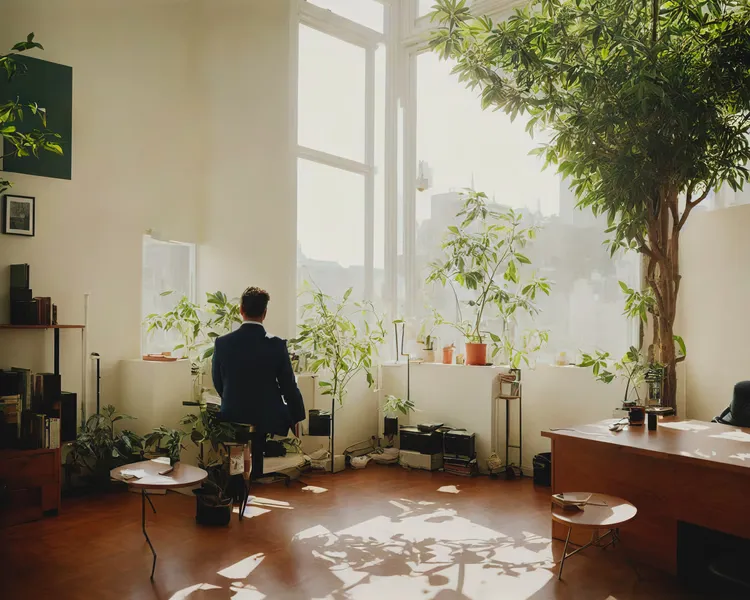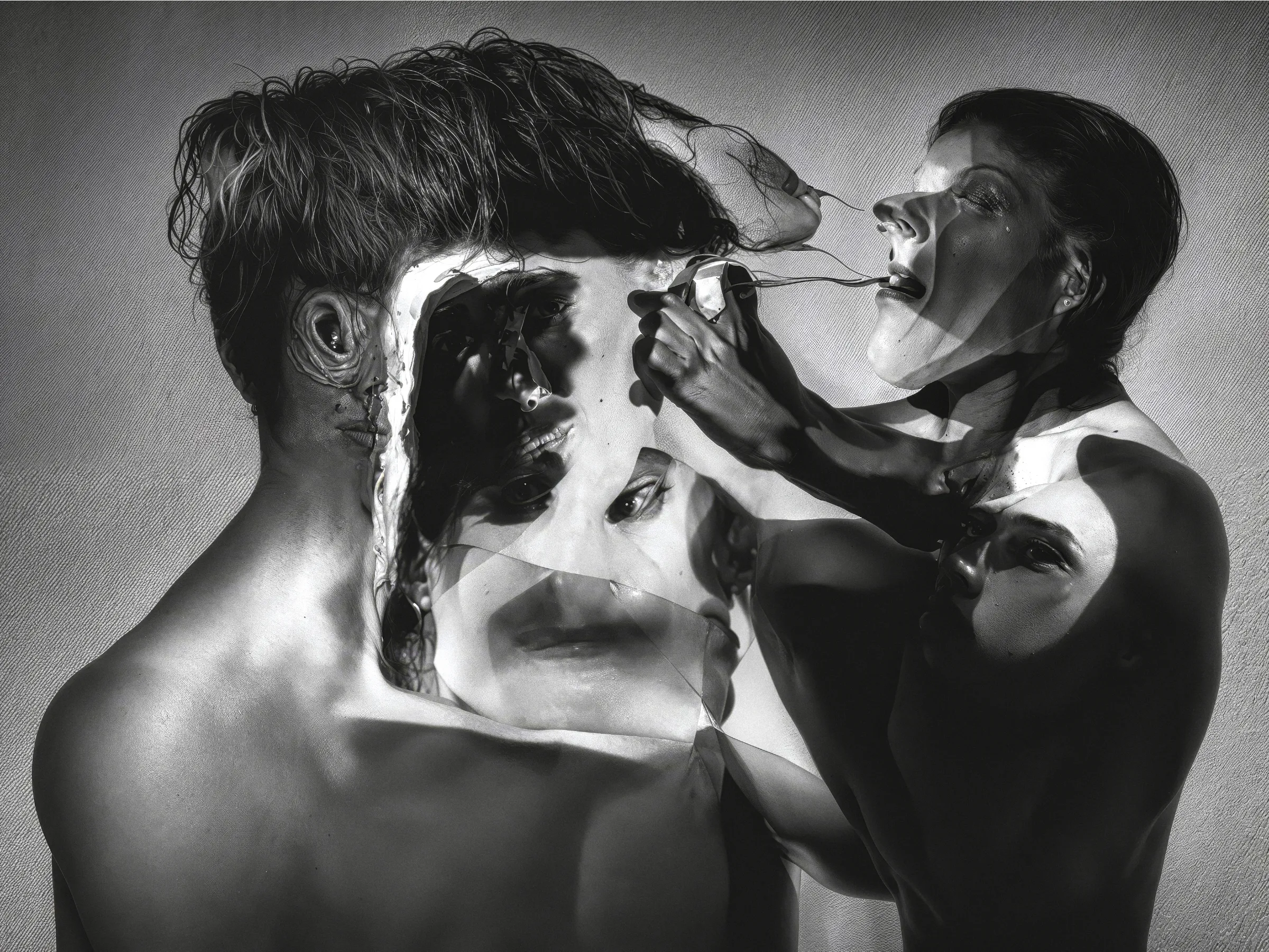Subscribe to get the latest on artists, exhibitions and more.
Looking Forward, Thinking Back: Roope Rainisto’s Vacation

Disembodied limbs, unsettlingly eerie scenes and profuse overcrowding are hardly desirable features of a long-awaited, hard-earned holiday. Yet, in Roope Rainisto’s collection Vacation, they are alluring clues that help us make sense of his new body of work. The collection’s images give a vibrant, nostalgic first impression, which is slowly interrupted as familiarity gives way to surreal disquiet; and references to moments in twentieth-century fashion, photography and popular cultures dissolve at the edges of recognition. In an environment where discourse about AI and artistic practice is increasingly binary, Rainisto’s work serves as a refreshing reminder of the many continuities and freedoms of generative imagery, and the creative potential of this space.
Vacation continues Rainisto’s exploration of the mythologised USA, building on his earlier collection Life In West America. It considers a metaphorical version of ‘America’ as a hallucination of life mediated and medialised by pervasive image cultures, teetering between fantasy and memory. Rainisto’s inspirations include the controversial Danish filmmaker Lars Von Trier – who made an unofficial trilogy investigating American society despite never having been to the US due to an intense fear of flying – and Robert Frank’s canonical publication The Americans. Though Frank was from the US, the first edition of this book was published in French as Les Americains (1958), tapping into what was perceived as a more legitimate market for photography at the time, as well as an audience more inclined towards imagining a singular American identity.

Rainisto’s reflection on these references is indicative of his position towards the wider question of the relationship between photography and AI. He believes that AI will neither be the death of photography nor of artists, despite the calls to protect copyright, IP rights and creative labour. Instead, it seems plausible that the frantic energy around AI’s capabilities will soon fade into the acceptance and integration experienced by earlier software such as Photoshop. This perspective holds firm with Rainisto’s approach, which – for Vacation – is built on the customisation of different versions of Stable Diffusion. To make the collection, he customised, finetuned and trained six different models; then continued to customise, finetune and train them again to get the intended outcome. Therefore, even someone using the same model and the same prompts would not achieve Rainisto’s distinctive results, reinforcing the often-overlooked importance of the artist’s hand in generative processes.
Rainisto’s practice is not about creating art that looks photographic, but rather about pushing at new creative boundaries that grow out of photographic principles. He sees photography as a starting point for the deconstruction of reality: a fixed image to be re-shaped through AI processes into a new visual language that reflects and refracts aspects of the human experience, creating a mirage of what reality might be. With technological advancement, the distance between these entities will only grow, and Rainisto’s work looks towards the potential for expanded photographic practices that foreground contextual information, that change over time, or that look different to each viewer. As he said: ‘It is not about the replication of art forms as we know them today, but about new technologies that will create new formats, expressed in a photographic style.’

However, the pace of advance is undeniably challenging. In only a few years, technological capabilities evolved from the generation of only unconvincing photographic images to photorealism, which inevitably impacts an artist’s ability to situate themselves and their practice in creative and techno-cultural trajectories. Rainisto prefers to exploit the fallibility of technologies rather than rely on their mathematical precision, which helps to stay this issue, having learnt that ‘creative impact has not much to do with the technical quality of the work.’ It is, after all, the cracks of failure that can best reflect the imperfect realities of humanity and counter such realities with fantasy.
Vacation deftly navigates this tension, and our innate desire for fantasy and escapism. The collection nudges at a critique of those who live from vacation to vacation, searching for happiness in a remove from their real lives. At the same time, it speaks to the absurd extremes of inequity, with the very notion of a vacation being structurally inaccessible for many and even irrelevant beyond a consumer capitalist model. Of course, the capitalist economic model and its associated social, political and ecological implications is an inevitable and important part of discussions around technology and the art market. The representations are many and valid, and regulation seems to be integral to better parity in the future. The NFT market in particular has travelled various iterations of public discourse, not to be unpacked here, however, it is worth noting that perhaps some of its controversies are rooted in the desire to conflate a digital cultural market with the traditional art market; both with systemic issues and inequities, and seemingly incompatible. Rainisto acknowledges the complexities of the NFT space, though also credits it for its opportunity, convinced he would not have enjoyed his marked success under the rules of the mainstream art world. In this, perhaps the environment in which Rainisto’s work comes into the public domain reflects the feeling of the work itself: intentional, whimsical, and anticipatory – much like a vacation.
Catherine Troiano
Dr Catherine Troiano is Curator of Photography at the Victoria and Albert Museum, with a focus on contemporary and digital practices. She co-curates the contemporary programme and leads the digital programme in the Victoria and Albert Museum Photography Section, which span acquisitions, exhibitions, commissions and research. Troiano has worked on major V&A projects, including the transfer of the...
Roope Rainisto
Roope Rainisto is a Finnish artist, designer, and photographer with a passion for storytelling. His work explores the boundaries between the real and the virtual.
He has worked for 25 years as a creative professional, now pioneering innovative applications of AI-based generative methods for post-photographic expression. He earned a Masters of Science in Information Networks from Helsinki...



